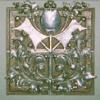
Note: While authors are asked to place warnings on their stories for some moderated content, everyone has different thresholds, and it is your responsibility as a reader to avoid stories or stop reading if something bothers you.
The Great Mirror of Same-Sex Love - Prose - 60. Christopher Robinson “The Muse of Violets”
.
“The Muse of Violets”
Renée Vivien biographical sketch
Vivien, Renée (1877-1909), [French Anglo-American] poet. One of the major French Lesbian poets of the turn of the [20th] century, Vivien was daughter of an English father of independent means and an American mother. Born in London, her real name was Pauline Mary Tarn. Her childhood was an unsettled one. The family moved to Paris when Vivien was one year old, but the death of her father in 1886 caused further upheavals. Vivien spent her adolescence moving between England and France, an oscillation which was matched by her difficult relationship with her mother – Mary Tarn seems to have been principally interested in getting her hands on as much as possible of her daughter’s inheritance. In consequence, while still an adolescent, Vivien suffered such diverse experiences as being made a ward of court, being threatened with incarceration in a mental asylum, and being formally presented to Queen Victoria. The decisive influence of her childhood, however, was Violet Shillito, the daughter of an American industrialist, who both encouraged her in her reading and writing of poetry and fostered her deep dis[trust] of men. In 1899, when Vivien had decisively re-established herself in Paris, Shillito introduced her to another American, also the daughter of an industrialist, Natalie Clifford Barney, who had just hit the gossip columns because of her relationship with the leading courtesan Liane de Pougy. Barney and Vivien were instantly attracted to one another, and by the following year were settled into a relationship which was to be central both to Vivien’s poetic career and (eventually) to her physical and emotional disintegration.
By 1901, the tempestuous relationship with Barney had already apparently collapsed: Vivien found their ‘open’ marriage too stressful, though she herself was very far from monogamous in the ensuing period. But Barney never resigned herself to the separation and made strenuous efforts to get Vivien back, efforts which ended only with the latter’s death. It was through Barney that Vivien met both the cream of Parisian Lesbian society and a wide range of writers, both the established and the avant-garde. Her own first volume of poems, Etudes et Préludes, appeared under the ambiguous signature R. Vivien in 1901, receiving favorable if limited critical attention. A swift succession of other collections followed, of which the most successful was Evocations (1903), and the most challenging La Vénus des aveugles (“The Venus of the Blind,” also 1903), but it was her Sapho, traduction nouvelle avec le texte grec, incorporating all the most recently found fragments and offering a modern and intensely personal view of the Greek poet Sappho, which brought her the most critical attention. Attention of a rather different kind followed the publication of an autobiographical novel, Une Femme m’apparut (“A Woman Appeared to Me”), in 1904 (revised edition 1905), with its open hostility to [patriarchy] and its hatred of maternity, the former of which also figured largely in the collection of stories, La Dame à la louve (“The Lady with the Lorgnette”), which she published in the same year. At the same period, she was also producing works under the pseudonym Paule Riversdale, some of them in collaboration with Baroness Hélène von [sic – it’s van] Zuylen [i] (with whom she had [a relationship] almost as long […] as that with Barney).

Vivien and Zuylen together,
the poet dressed as an 18th century chevalier
The stress of her life, with its endless travel, intense bouts of writing (her collections of poetry alone total a dozen in eight years), sexual [adventures] and drugs finally took their toll. In 1908, she unsuccessfully attempted suicide (with laudanum, in the Savoy Hotel in London). The following year her health began to collapse generally – eye problems, dysentery, amnesia – and eventually she died from a bout of pneumonia [at 32 years of age].
The [fascination with mortality] which marked her life is heavily imprinted on her writing, not least through the themes and images of pain, destruction and death which she shares with Baudelaire and the poets of the male “Decadent” tradition. There is, however, at the same time a quite different side to her writing, deriving from her interest in Sappho and the other Greek women poets, which tried to project a female world unsullied by masculine contact. Here the images are of light, warmth and purity. This can be linked to the importance which Mytilene (the modern name for the island of Lesbos) took on for her: she escaped to the island at regular intervals in the period 1905-1907. The aesthetic tension within her writing thus mirrors the tension between the desire for Lesbian separatism and the constraints of social reality which marked her life.
[Also see:]
S. Benstock Women of the Left Bank: Paris, 1900-1940 (London 1986)
K. Jay The Amazon and the Page: Natalie Clifford Barney and Renée Vivien (Indianapolis 1988)
V. Sanders La Poésie de Renée Vivien (Amsterdam 1991)
—Christopher Robinson, [ii]
2001
[i] Full name: Baroness Hélène van Zuylen van Nijevelt van de Haar, or Hélène de Zuylen de Nyevelt de Haar, née Betty Louise Caroline de Rothschild. Among her female love interests, she went by the cuddly nicknames of escargot and/or brioche.
[ii] “Vivien, Renée (1877-1909)” Christopher Robinson Who’s Who in Gay & Lesbian History: from Antiquity to World War II [Robert Aldrich / Garry Wotherspoon, Editors] (London 2001), ps. 466-467
-
 3
3
Note: While authors are asked to place warnings on their stories for some moderated content, everyone has different thresholds, and it is your responsibility as a reader to avoid stories or stop reading if something bothers you.
Recommended Comments
Chapter Comments
-
Newsletter
Sign UpSign Up and get an occasional Newsletter. Fill out your profile with favorite genres and say yes to genre news to get the monthly update for your favorite genres.





